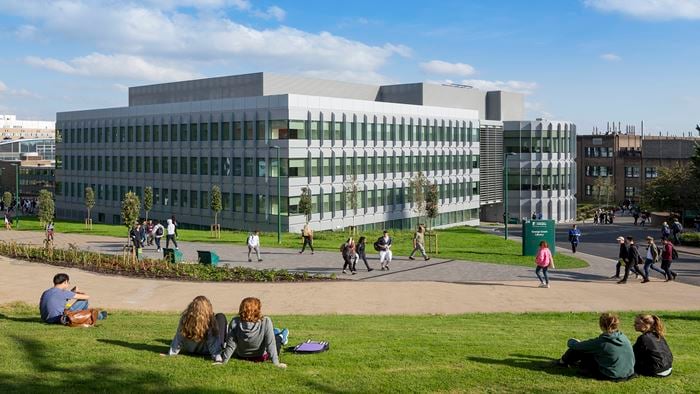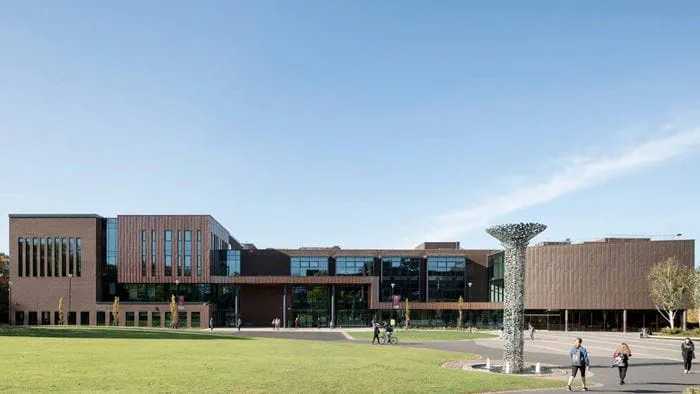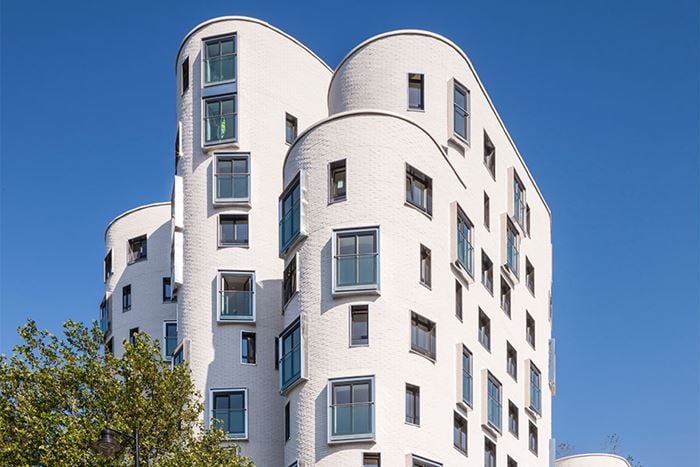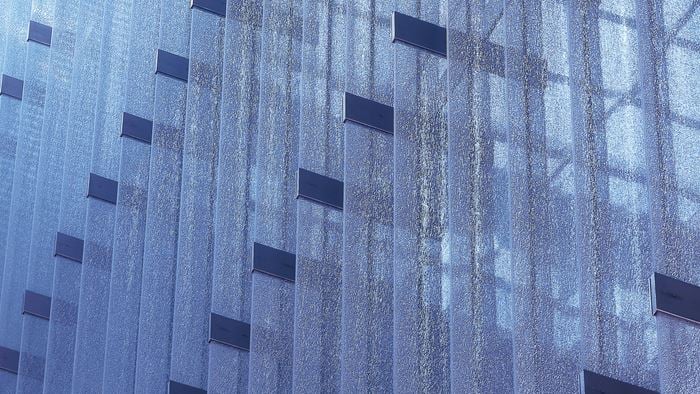The renovation of Amsterdam’s OBA Oosterdok library has confirmed its role as a go-to place for locals and visitors to read, learn and meet up, with the creation of innovative, adaptable learning spaces and a wide array of hangout areas.
The library, initially built in 2007 to the east of Amsterdam’s Central Station, is one of the city’s leading attractions, with more than two million visitors coming through the doors every year. Responding to the changing nature of learning and working, the library has been re-designed as a ‘house of new learning’, in the words of current director Martin Obendse.
Consolidating OBA as a leading destination, the building will now provide a range of new spaces catering to a wider range of users, from students and local organisations all the way to freelancers and start-up firms. New spaces include areas for quiet and group study, as well as a suite of adaptable meeting rooms and a second, smaller lecture theatre.
Arup was initially appointed in 2007 to provide structural design for the new build. For the latest refurbishment, Arup was engaged to provide a wide range of consultancy services including lighting design, and carry out a feasibility assessment for the proposed changes.
Project Summary
2 million+ visitors a year
2007inauguration date
1.1 millionbooks in collection
With a collection of over 1.1 million volumes, books are still very much the soul of the building, but the real challenge was to upgrade the building to cater to a new generation of users. Adapting the library to become a key meeting point for a variety of users, and responding to the changing styles of learning (digital as well as analogue) was the main objective of the building upgrade.

Spaces have been redesigned to include more room for individual study and group learning, a second auditorium, and an expanded food offering including a grand café on the ground floor, featuring the largest magazine collection in the Netherlands; and a new restaurant - Babel - on the seventh floor. Another new feature is the World Library, a series of previously unused wood-clad alcoves now accessible via an elegant staircase that will house a selection of international (foreign language) books donated to OBA, and which reflect the more than 300 languages spoken in the city of Amsterdam.
© Luuk Kramer
“Thanks to the adjustments of the quiet rooms and theater halls, customer counters and the expansion of catering facilities we are able to expand our programming and opening times. This will enhance the collaboration with potential partners. This way the OBA remains innovative and inspiring for current and new visitors. ” Martin Berends OBA Director
Sustainability: Reusing materials helps future-proof the library
We had initially been involved in the construction of the OBA Oosterdok in 2007 alongside architects Jo Coenen. For the renovation works, we provided a range of specialist consultancy services including water, mechanical, electrical, public health and fire engineering, as well as acoustics and lighting consultancy services.
© Luuk Kramer
Sustainability was a key design principle during the renovation work, giving existing materials a new lease of life: a load-bearing study determined that the building’s existing structure could sustain the new staircase that provides improved access to the theatre.
This in turn ensures a budget-friendly, circular economy-inspired extension of the building’s lifespan. We conducted a feasibility study to evaluate building and existing installations to understand whether the existing building could be easily adapted to accommodate new uses. The building uses a heat storage system in combination with highly efficient boilers. Outdoor air is used to cool the building, providing an environmentally-friendly, sustainable solution.
Flexible climate concept: designing sustainable solutions
During the renovation, providing energy-efficient climate control was one of the key drivers. The building’s existing piping has been retained and new ventilators included: together with the floor’s existing grid layout, the spaces can be more easily adapted to suit different uses.
The grand entrance hall was retained, and is still a beautiful beacon of light. The designers made the most of the contrasted lighting to signpost the user journey: the central escalator section is artificially lit, transitioning towards natural daylight in the books area. Our lighting consultants also designed an array of solutions to ensure the spaces can be truly multipurpose, while introducing more sustainable LED luminaries throughout.
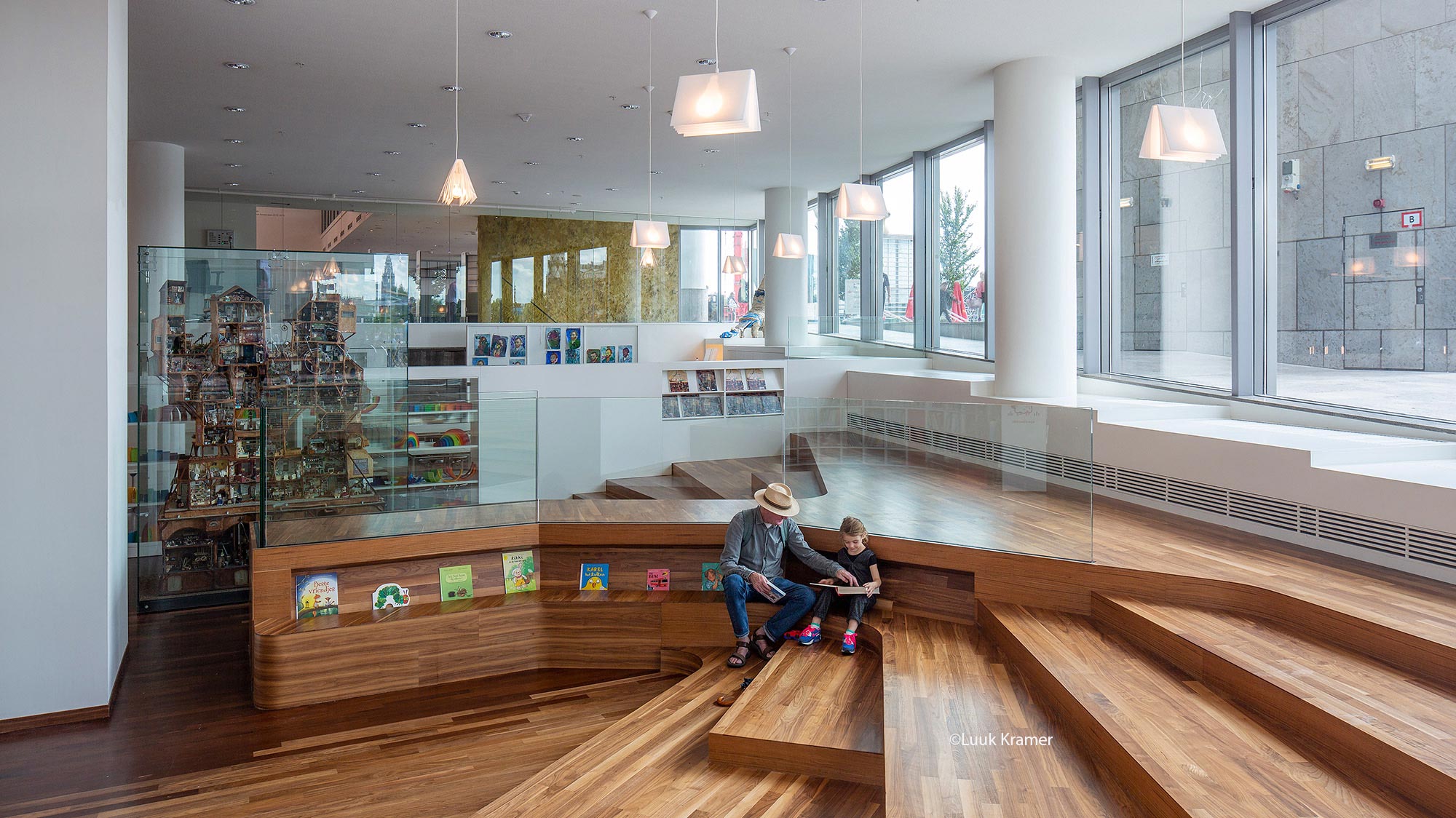 ;
;

